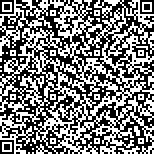下载中心
优秀审稿专家
优秀论文
相关链接
摘要

遥感图像往往由于内外因素的干扰含有各种噪声 ,为提高图像质量人们对其进行滤波。常规的滤波方式完全基于图像空间域 ,在消除异常点使图像平滑的同时使边界变得不清楚从而使图像模糊 ;或者正相反 ,在边缘信息得到增强时也放大了图像噪声而使图像变得粗糙。该文的自适应滤波方法充分利用多光谱和高光谱遥感图像的光谱维信息 ,滤波时不仅要使均匀的地块得到平滑 ,而且要使地块间的边缘、局部的异常点、线仍然得到保存、在光滑的同时尽量保持原有的数值特征。
关键词:
遥感图像,平滑,自适应滤波Because of disturbance from inside or outside of sensors,there is much noise in the remote sensing image.People always filtrate image in order to improve its quality.Traditional filters are based on image's space dimension.As a result,they usually blur the edges while smooth the image;or make image rough while enhance image's edges contrarily. The adaptive filter in this articls,AFS(Adaptive Filter based on Spectrum),uses the spectral information of multispectral or hyperspectral remote sensing images to smooth the even object,strengthen edges and keep the spectra of exceptional point,line orparcel of image. The key of AFS is how to complete the choosimg pixels in one filter mask based on pixels'spectral information. This method is also a kind of convolution operation to images,the difference between AFS and traditional smooth method is operating with pixels in filter mask selectively.We give some weight to valid pixels and give zero weight to invalid pixels in the filter mask,then use this filter to operate with image.

